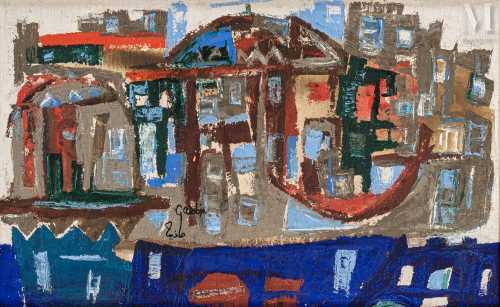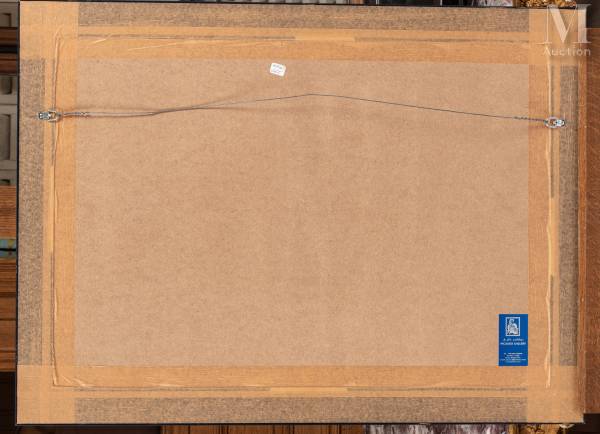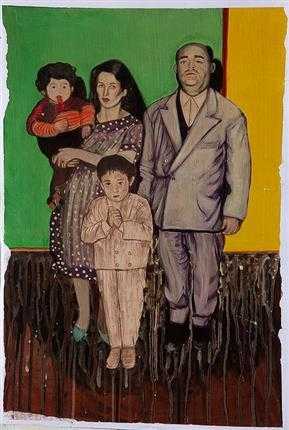- The Opera of Cairo
- Oil on board
- Painting
- 59 * 36 cm
- signed middle left in Arabic and Latin
16 December 2021
Estimation
€4,000
4,503 USD
-
€6,000
6,754 USD
Realized Price
€4,000
4,503 USD
20%
Artwork Description
Refusing to fit into the mainstream art movement of her day, Gazbia Sirry replaced formal modernist rules with Egyptian-specific artistic conventions to critically address women's rights, patriarchy, social justice and justice. Western imperialism. A true emblematic figure during the seventy years of Arab history, Sirry creates paintings resembling mosaics of social realism that still elicit multiples of culturally marked interpretations. Despite his famous use of color, his art form continues to serve as an urgent and contemporary political act.
The canon of Egyptian art history has always defended women. Unlike their Western contemporaries, Egyptian women artists have been both present and on an equal footing with their male counterparts since the first Cairo Salon was held in 1921. Thus, a strong local activity of autonomous women painters emerged in course of the last century. Exposed to the outside world, they defied convention, launched artistic movements, fought for women's rights and, in doing so, spoke for a nation. Gazbia Sirry (born in 1925) is one of these revolutionary women.
Excerpt from the article “Gazbia Sirry—When Modern Arab Form Meets Politics, Fatenn Mostafa-Kanafani, June 30, 2021”
The canon of Egyptian art history has always defended women. Unlike their Western contemporaries, Egyptian women artists have been both present and on an equal footing with their male counterparts since the first Cairo Salon was held in 1921. Thus, a strong local activity of autonomous women painters emerged in course of the last century. Exposed to the outside world, they defied convention, launched artistic movements, fought for women's rights and, in doing so, spoke for a nation. Gazbia Sirry (born in 1925) is one of these revolutionary women.
Excerpt from the article “Gazbia Sirry—When Modern Arab Form Meets Politics, Fatenn Mostafa-Kanafani, June 30, 2021”
More lots by Gazbia Sirry

The Market
Estimation
£2,500
3,446 USD
-
£3,500
4,824 USD
Realized Price
£3,725
5,134 USD
24.167%
Sale Date
Bonhams
-
17 November 2021

The Coffeehouse
Estimation
£8,000
10,667 USD
-
£12,000
16,000 USD
Realized Price
£11,520
15,360 USD
15.2%
Sale Date
Bonhams
-
25 November 2025
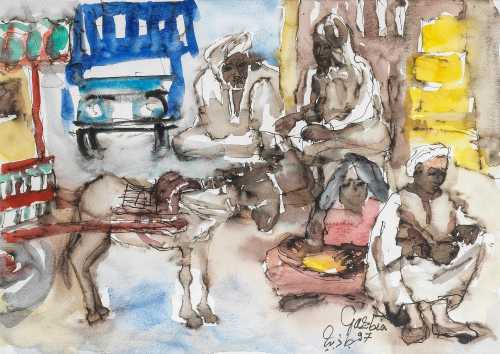
Untitled (Village Scene)
Estimation
£2,000
2,796 USD
-
£3,000
4,193 USD
Realized Price
£4,080
5,703 USD
63.2%
Sale Date
Bonhams
-
2 June 2021
Realized Price
47,995 USD
Min Estimate
29,226 USD
Max Estimate
40,248 USD
Average Artwork Worth
+73.586%
Average Growth of Artwork Worth
Sales Performance Against Estimates
Average & Median Sold Lot Value
2021 - 2025
Performance vs. Estimate
2021 - 2025
Sell-through Rate
2021 - 2025
Similar Artworks
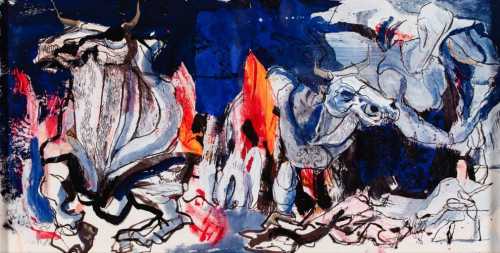
Untitled
